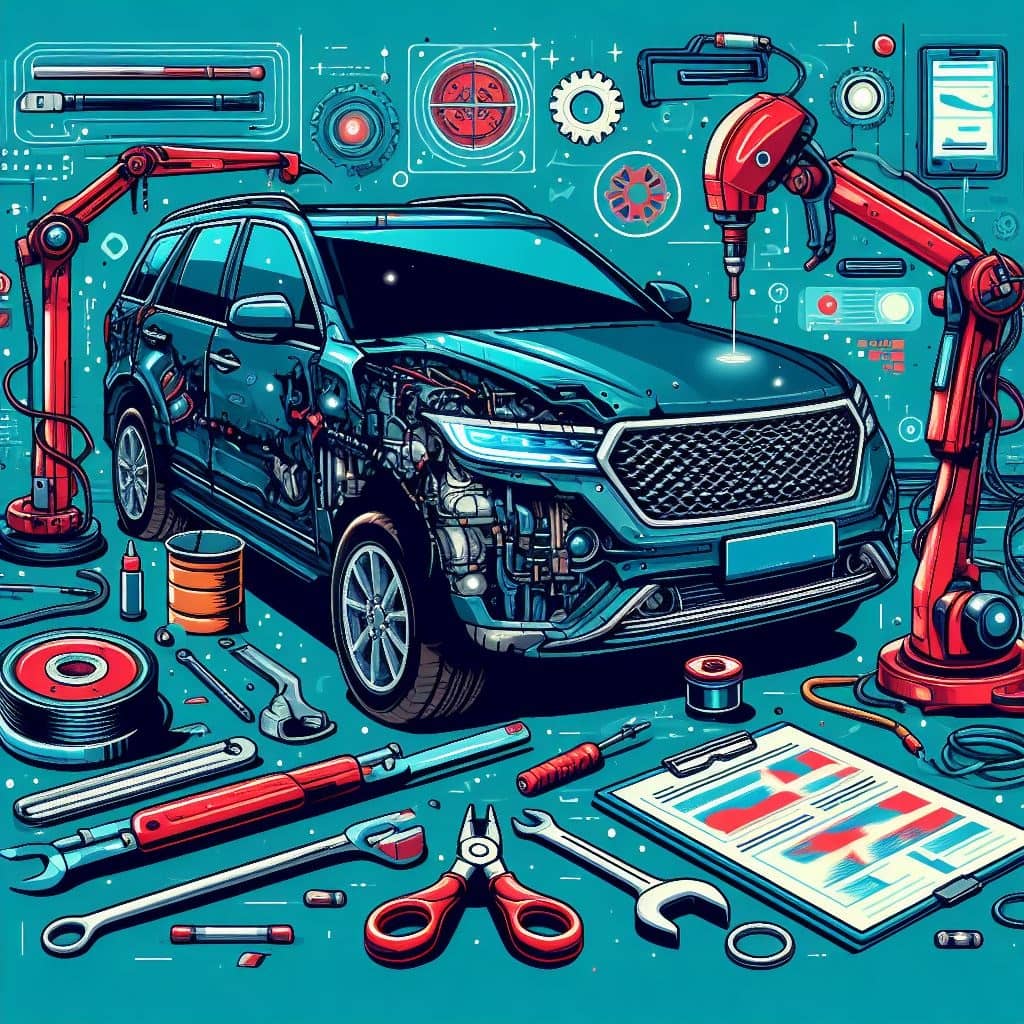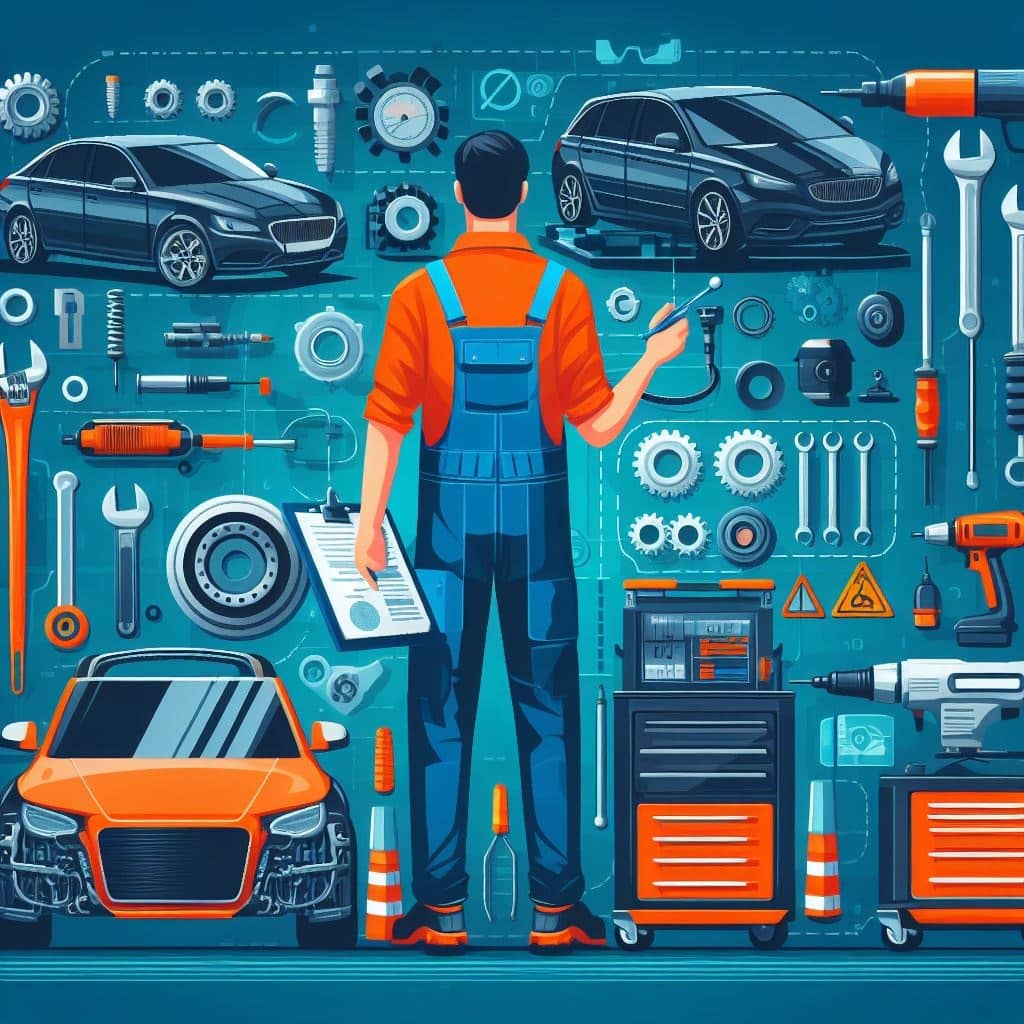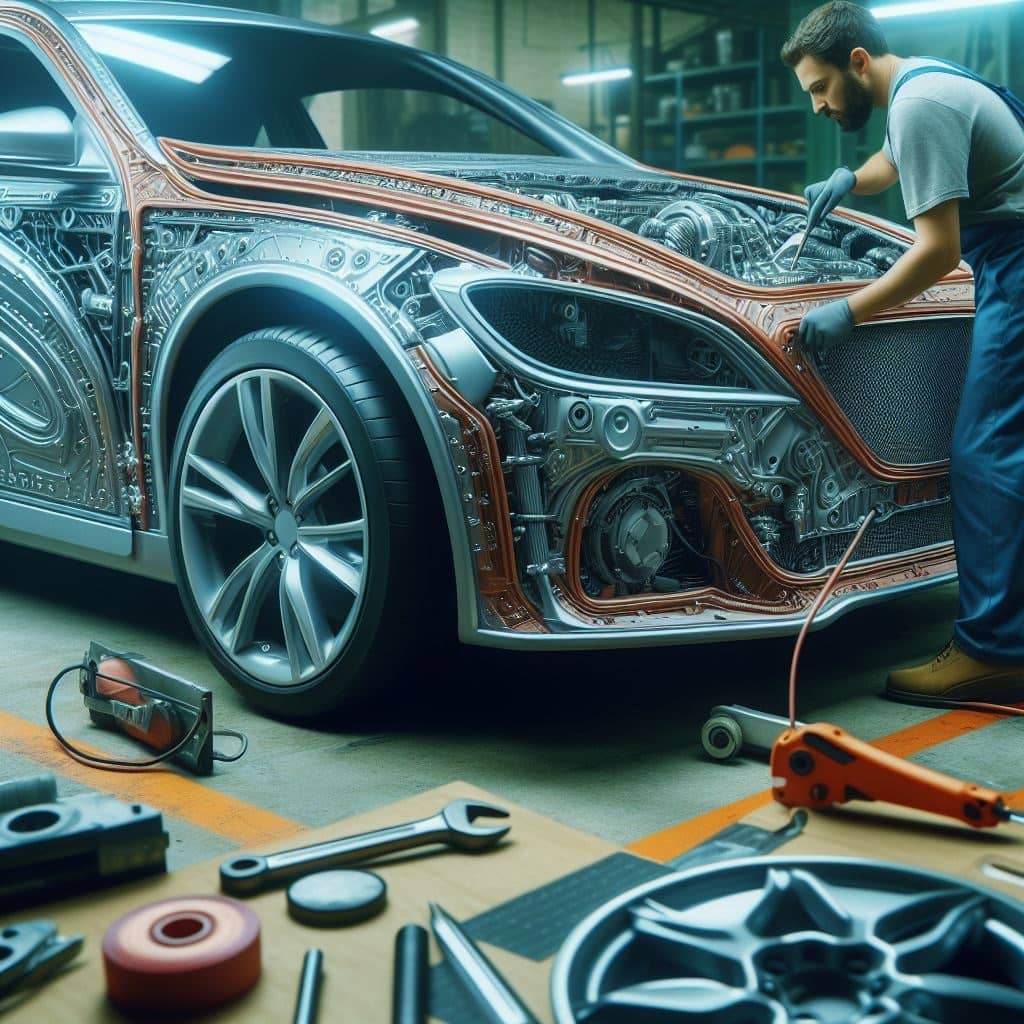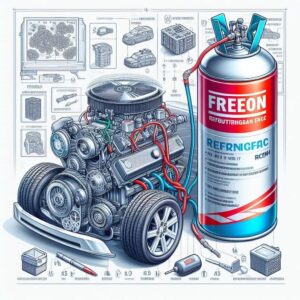Welcome to the ultimate guide to car body maintenance and repairs, where we will reveal the secrets to keep your ride looking spotless.
Did you know that regular car body maintenance not only improves the aesthetics but also plays a vital role in preserving the value of your vehicle?
A well-maintained car body can retain up to 10% more resale value compared to a neglected one.
Whether you are a car enthusiast or simply want to take better care of your vehicle, this comprehensive guide will provide expert tips and advice on every aspect of car body maintenance.
From basic tasks to advanced techniques, you’ll learn how to keep your car looking its best and prevent costly repairs in the long run.
Key Takeaways:
- Regular car body maintenance can help retain up to 10% more resale value for your vehicle.
- This guide will provide expert tips and advice on every aspect of car body maintenance.
- Proper maintenance can prevent costly repairs and keep your car looking its best.
- Basic tasks like washing, waxing, and regular inspections are essential for car body maintenance.
- For more advanced techniques, we’ll cover topics such as paint correction and ceramic coatings.
Understanding the Importance of Car Body Maintenance

Before diving into specific maintenance techniques, it’s crucial to understand why maintaining your car’s body is essential.
Regular car body maintenance not only preserves the value of your vehicle but also plays a vital role in preventing rust and corrosion and enhancing its overall aesthetics.
When it comes to car body maintenance, prevention is key.
By taking proactive measures to care for your car’s exterior, you can avoid costly repairs in the future.
Additionally, a well-maintained car body greatly enhances the overall driving experience and gives you a sense of pride in owning a spotless ride.
Preserving the Value of Your Vehicle:
Your car is an investment, and just like any other investment, it’s important to protect its value.
Regular car body maintenance ensures that your vehicle maintains its resale value, should you decide to sell it in the future.
Potential buyers are more likely to be attracted to a well-maintained car with minimal exterior damage and blemishes.
Preventing Rust and Corrosion:
Rust and corrosion not only detract from the appearance of your car but can also cause serious structural damage.
Regular maintenance, such as washing and waxing your car, helps protect the paintwork and acts as a barrier against corrosive elements like salt, moisture, and pollution.
Properly maintained vehicles are less prone to rust, ensuring longevity and structural integrity.
Enhancing Overall Aesthetics:
Your car’s exterior is what creates the first impression.
A well-maintained car body with a shiny paint finish, clean windows, and polished metal trims adds to the overall appeal of your vehicle.
Whether you’re driving for personal pleasure or business purposes, a clean and attractive car body leaves a positive impression on others.
In the next section, we’ll dive into basic car body maintenance tips that every car owner should know.
From washing and waxing techniques to regular inspections, we’ll provide you with step-by-step instructions and insider tips to help you keep your car’s body in excellent condition.
Basic Car Body Maintenance Tips for Every Car Owner

Maintaining the body of your car is essential for its longevity and aesthetic appeal.
By implementing these basic car body maintenance tips, you can keep your vehicle in excellent condition and prevent major repairs down the line.
-
Regular Washing and Waxing
To protect your car’s paint and prevent corrosion, it’s important to wash your car regularly. Use a pH-balanced car wash soap and a soft sponge or microfiber cloth to remove dirt and grime. After washing, apply a coat of wax to provide a protective barrier against environmental elements.
-
Inspect and Address Scratches
Inspect your car’s body for any scratches or paint damage. For minor surface scratches, you can use a touch-up paint pen or a scratch repair kit to fix the imperfections. Deep scratches may require professional assistance for a seamless repair.
-
Protective Coatings
Consider applying a protective coating such as a ceramic coating or paint sealant to your car’s body. These coatings provide an additional layer of protection against UV rays, dirt, and contaminants, making it easier to maintain a clean and pristine exterior.
-
Regular Inspections
Perform regular inspections of your car’s body to identify any signs of rust, corrosion, or damage. Check the undercarriage, wheel wells, and other hidden areas for any signs of rust, and address them promptly to prevent further deterioration.
By incorporating these basic car body maintenance tips into your routine, you can ensure that your vehicle remains in top condition for years to come.
| Maintenance Task | Description |
|---|---|
| Washing and Waxing | Regularly clean your car’s exterior using a pH-balanced car wash soap and apply a coat of wax for added protection against environmental elements. |
| Scratch Repair | Inspect and address minor scratches using touch-up paint pens or scratch repair kits. Deep scratches may require professional assistance. |
| Protective Coatings | Consider applying ceramic coatings or paint sealants to provide an additional layer of protection against UV rays and contaminants. |
| Regular Inspections | Inspect your car’s body for signs of rust, corrosion, or damage. Address any issues promptly to prevent further deterioration. |
Addressing Common Car Body Repairs
Accidents happen, and sometimes, your car’s body may require repairs.
Whether it’s a minor scratch, a dent, or paint damage, it’s essential to address these issues promptly to maintain the overall aesthetics and value of your vehicle.
In this section, we’ll guide you through common car body repairs and provide you with insights into DIY repair techniques, as well as when it’s best to seek professional assistance.
Minor scratches can be a common occurrence, and while they may seem inconsequential, they can negatively impact the appearance of your car over time.
Fortunately, there are several DIY techniques you can try to remove or diminish these scratches.
Keep in mind that the effectiveness of these methods may vary depending on the severity of the scratch and the type of paint used on your car.
If you’re uncertain about your car’s paint type or the extent of the damage, it’s advisable to seek professional advice.
DIY Scratch Repair Techniques:
- Using Touch-Up Paint: For shallow scratches that haven’t penetrated the clear coat, you can use touch-up paint to cover them up. Ensure you have a paint match that closely matches your car’s color, follow the instructions provided with the touch-up paint kit, and carefully apply it to the affected area.
- Buffing: If the scratch is relatively shallow and hasn’t reached the base coat, buffing can be an effective method to minimize its visibility. Start by cleaning the area thoroughly, then apply a rubbing compound or scratch remover. Using a buffing pad or microfiber cloth, gently rub the compound into the scratch in circular motions. Follow up with polishing and waxing to restore the shine.
- Toothpaste Hack: This DIY hack is suitable for superficial scratches on clear plastic headlights. Apply a small amount of toothpaste to a soft cloth and gently rub it over the scratches in a circular motion. Rinse with water and repeat if necessary, then dry the headlights and apply a protective coating.
While these DIY techniques can be effective for minor scratches, it’s important to note that more extensive or deep scratches may require professional attention.
Trained technicians have access to specialized tools and equipment, enabling them to achieve seamless repairs and restore the original paint finish.
Dents are another common issue that can occur due to accidental impacts or encounters with objects.
Small dents can sometimes be repaired using DIY techniques, known as paintless dent repair (PDR).
This method involves manipulating the metal from behind the dent using specialized tools, without the need for repainting.
However, PDR is only suitable for certain types of dents, and its success largely depends on factors such as the size, location, and accessibility of the dent.
For larger or more complex dents, it’s advisable to consult a professional body shop.
They have the expertise and equipment to assess the damage accurately and provide suitable repair solutions.
Depending on the severity of the dent, the repair process may involve using body filler, reshaping the damaged area, and repainting.
It’s crucial to entrust these repairs to professionals who can ensure a high-quality finish and seamlessly blend the new paint with the existing one, maintaining the visual integrity of your car.
In case of any car body repair, remember that the repair process can vary based on the make, model, and the severity of the damage. Always consult and follow the manufacturer’s guidelines and seek professional assistance if you’re unsure.
When it comes to paint damage, it’s essential to address it promptly to prevent further deterioration and potential rust and corrosion.
Paint damage can occur due to various reasons, including stone chips, bird droppings, tree sap, or exposure to harsh weather conditions.
While minor paint damage can be addressed with DIY repair techniques, extensive or severe damage may require professional intervention.
Diy paint touch-up kits can be helpful for minor chips and scratches that haven’t reached the metal or primer layer.
These kits typically include touch-up paint, a clear coat, and applicators.
Follow the instructions provided with the kit carefully to ensure proper application and blending with the existing paint.
Keep in mind that color matching can be challenging, and it’s crucial to choose a compatible paint color to achieve satisfactory results.
In cases where the paint damage is more significant or affects larger areas of the car, professional paint repair or repainting may be necessary.
Trained technicians can accurately match the paint color, prep the surface, and apply a new coat of paint, ensuring a seamless finish that blends seamlessly with the original paintwork.
Advanced Car Body Maintenance Techniques

For those looking to take their car body maintenance to the next level, we’ll delve into advanced techniques that will help you achieve a showroom-worthy exterior.
Whether you want to perfect the paint, enhance the overall aesthetic, or tackle deep scratches, these expert-level strategies will elevate your car’s appearance.
Paint Correction
Paint correction is a meticulous process that involves removing imperfections from the car’s paint surface, such as swirl marks, scratches, and oxidation.
By using specialized tools and compounds, you can restore the paint to its original luster, making your car look brand new.
Ceramic Coatings
Ceramic coatings offer long-lasting protection for your car’s body.
These liquid polymer coatings form a strong bond with the paint, creating a protective layer that shields against UV rays, dirt, and other contaminants.
The result is a glossy finish that enhances the car’s appearance and makes maintenance easier.
Deep Scratch Removal
Deep scratches can be unsightly and can compromise the integrity of your car’s body.
In this advanced technique, we’ll explore methods to effectively remove deep scratches, from sanding and polishing to using touch-up paint for seamless repairs.
These advanced car body maintenance techniques require precision and attention to detail. It’s crucial to have the necessary tools, knowledge, and patience to ensure successful results. If you’re unsure or uncomfortable performing these techniques yourself, seeking professional assistance is recommended.
Now that you have a glimpse into advanced car body maintenance techniques, you can elevate the appearance of your vehicle to the next level.
Whether you’re a car enthusiast or simply want to keep your car looking its best, these strategies will help you achieve a spotless ride.
| Technique | Description |
|---|---|
| Paint Correction | Process of removing imperfections from the car’s paint surface |
| Ceramic Coatings | Long-lasting liquid polymer coatings that protect the paint |
| Deep Scratch Removal | Techniques to effectively remove deep scratches from the car’s body |
Conclusion
In conclusion, maintaining your car’s body is essential for preserving its value and ensuring a visually appealing ride.
By following the tips and techniques outlined in this guide, you can keep your vehicle’s exterior in pristine condition for years to come.
Regular maintenance plays a vital role in preventing rust, corrosion, and other damages that can diminish your car’s appearance and decrease its resale value. Cleaning, waxing, and inspecting your car regularly will help to remove dirt, grime, and contaminants that can accumulate over time.
Additionally, addressing minor scratches, dents, and paint damage promptly will prevent them from worsening and potentially requiring costly repairs.
To take your car body maintenance to the next level, consider exploring advanced techniques such as paint correction and ceramic coatings.
These methods can provide added protection and a glossy finish, ensuring your car turns head wherever it goes.
Remember, investing time and effort into maintaining your car’s body will pay off in the long run, keeping your ride looking its best and maintaining its value.
FAQ
What are some basic car body maintenance tasks I should be doing regularly?
Some basic car body maintenance tasks you should be doing regularly include washing and waxing your car, inspecting for any damage or rust, and touching up any paint chips or scratches.
How often should I wash and wax my car?
It is recommended to wash your car every 1-2 weeks and wax it every 2-3 months to maintain a protective barrier and keep the paint in good condition.
How can I prevent rust and corrosion on my car’s body?
To prevent rust and corrosion on your car’s body, make sure to wash off any salt or chemicals from the road during the winter months, regularly inspect for any signs of rust, and apply a protective wax or coating.
What should I do if I notice minor scratches or dents on my car’s body?
If you notice minor scratches or dents on your car’s body, you can try using a touch-up paint or DIY dent removal kit.
However, for more extensive damage, it’s best to consult a professional car body repair shop.
How can I remove deep scratches from my car’s body?
Removing deep scratches from your car’s body can be a complex process.
It may require sanding, buffing, and applying multiple layers of paint.
It’s typically best to seek the assistance of a professional auto body technician for this type of repair.
What are some advanced techniques for maintaining my car’s body?
Advanced techniques for maintaining your car’s body include paint correction, which involves removing imperfections restoring the paint’s gloss, and applying ceramic coatings for long-lasting protection and enhanced shine.
These techniques often require specialized tools and expertise.
You can also read:




